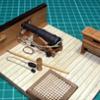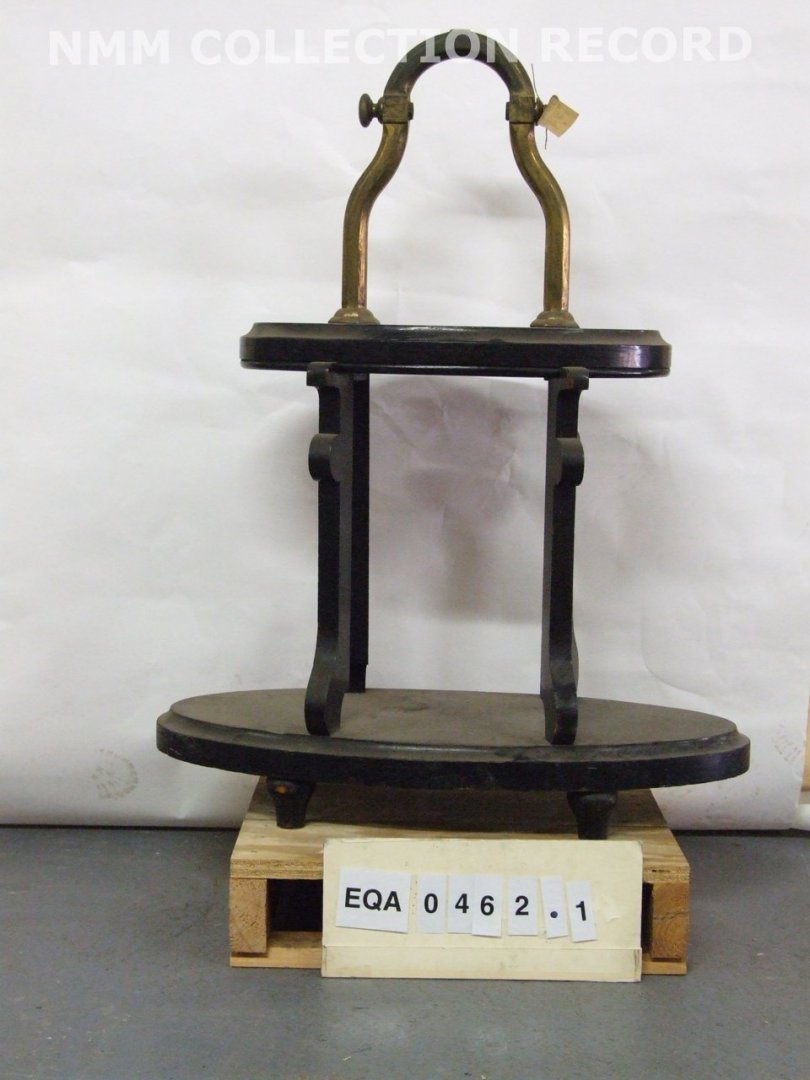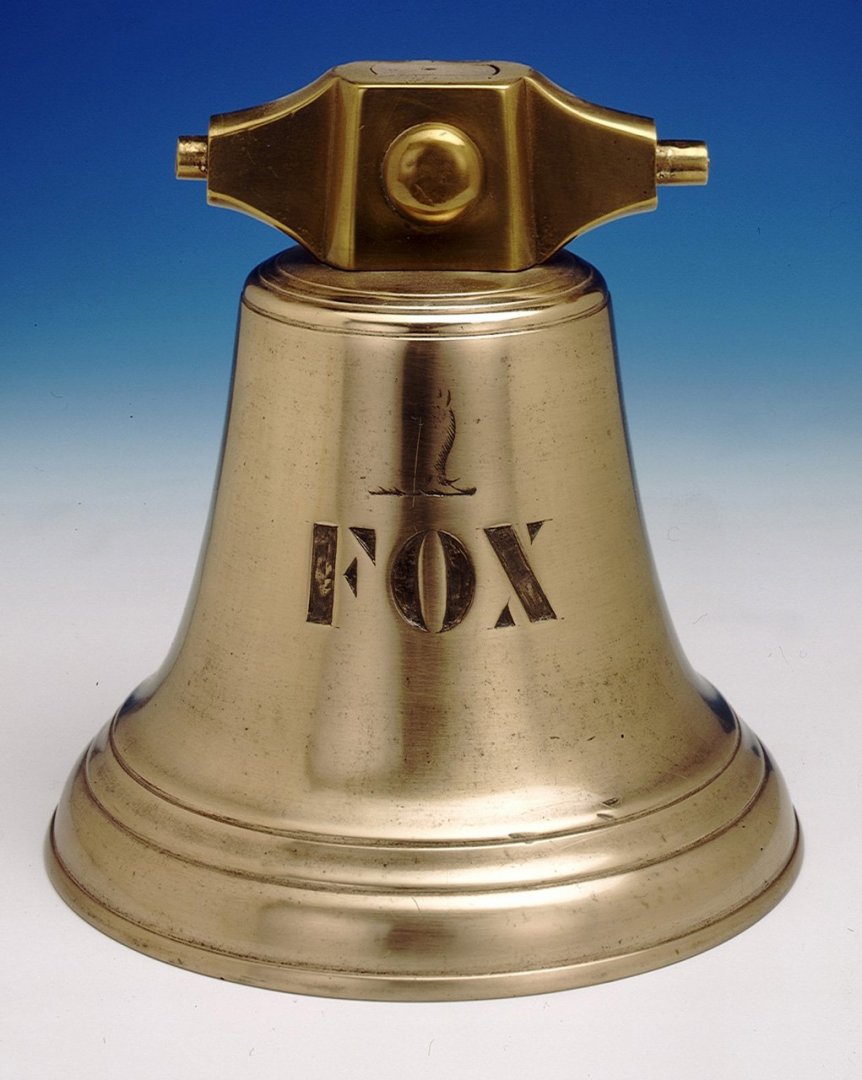-
Posts
5,951 -
Joined
-
Last visited
Content Type
Profiles
Forums
Gallery
Events
Everything posted by BANYAN
-
Very nice work on both the oars and the faux burle Druxey. You say you got lucky but me thinks some experience coming through here Did you use a jig to replicate the blades etc? cheers Pat
- 433 replies
-
- open boat
- small boat
-
(and 1 more)
Tagged with:
-

HMCSS Victoria 1855 by BANYAN - 1:72
BANYAN replied to BANYAN's topic in - Build logs for subjects built 1851 - 1900
Thanks for the encouragement Rob, still at a slow pace but hopefully can pick that up soon. cheers Pat- 1,013 replies
-
- gun dispatch vessel
- victoria
-
(and 2 more)
Tagged with:
-
Now starting to show her true lines Rob. cheers Pat
- 3,560 replies
-
- clipper
- hull model
-
(and 2 more)
Tagged with:
-

HMCSS Victoria 1855 by BANYAN - 1:72
BANYAN replied to BANYAN's topic in - Build logs for subjects built 1851 - 1900
Thanks for the encouragement Keith; hopefully something to show on the rigging soon. Thanks for looking in and kind comments Jason, appreciated. cheers Pat- 1,013 replies
-
- gun dispatch vessel
- victoria
-
(and 2 more)
Tagged with:
-
Great job on the sails Steven, as Druxey points out, remarkable definition considering the weave of the material. Good luck with the woldings on the foremast; perhaps using a curved needle (sacking/suture or the like) might assist? cheers Pat
- 740 replies
-
- Tudor
- restoration
-
(and 4 more)
Tagged with:
-

HMCSS Victoria 1855 by BANYAN - 1:72
BANYAN replied to BANYAN's topic in - Build logs for subjects built 1851 - 1900
Thanks Ed, your comments are much valued and appreciated. Slowly getting there, I am surprised how long it is taking me to finalise the rigging plan cheers Pat- 1,013 replies
-
- gun dispatch vessel
- victoria
-
(and 2 more)
Tagged with:
-

HMCSS Victoria 1855 by BANYAN - 1:72
BANYAN replied to BANYAN's topic in - Build logs for subjects built 1851 - 1900
Thanks for looking in and kind comments Mark, Keith and Druxey; much appreciated. I am about to tackle the flag locker and a few remaining very minor fittings (Lead's man stanchions and belt, Fish davit etc.); I will then do a photo stack image of the full upperdeck to ensure all is in focus. cheers Pat- 1,013 replies
-
- gun dispatch vessel
- victoria
-
(and 2 more)
Tagged with:
-

YOUNG AMERICA 1853 by Bitao - FINISHED - 1:72
BANYAN replied to Bitao's topic in - Build logs for subjects built 1851 - 1900
There's only one phrase to repeat, and repeat, for your work - stunning work! cheers Pat- 257 replies
-
- young america
- Finished
-
(and 1 more)
Tagged with:
-

74-Gun Ship Gun Deck by Jeronimo - FINISHED
BANYAN replied to Jeronimo's topic in - Build logs for subjects built 1801 - 1850
Lovely work as usual Karl; looks great. cheers Pat -

HMCSS Victoria 1855 by BANYAN - 1:72
BANYAN replied to BANYAN's topic in - Build logs for subjects built 1851 - 1900
A little more progress folks; some dusting, removal of glue (when properly dry) etc still to do but here is the result for the Gallows and Belfry. In hindsight, I wish I had not secured the Elliott riding bitts in place as they need to be a little more forward, but in reality there is still room to work the cable around them if needed. I couldn't move the gallows further aft as I have to preserve room/space for the capstan bars when fitted. I still have to add the simulated bolt heads on the legs of the belfry. The bit of brass at the top is a breather pipe. The tank is 3D printed resin airbrushed with Mr. Metal 'iron'; although not clear, the bit bottom central is a cock for drawing fresh water which I think should no be at the back - too late now though. Sorry the challenge was not taken up re fitting a bell rope - the thing was just to small. I could not drill a small enough hole in the clapper's end without the drill bit wandering around (only 0.3mm end below the round part). I may end up just gluing a bit of twisted cotton (3 colours) on there. cheers Pat- 1,013 replies
-
- gun dispatch vessel
- victoria
-
(and 2 more)
Tagged with:
-
A thing of beauty indeed, very clean work. cheers Pat
- 433 replies
-
- open boat
- small boat
-
(and 1 more)
Tagged with:
-
Can only comment on the high quality of your build Mark as I am not familiar with the spars and rigging of these vessels. To eye, doesn't seem too thick. cheers Pat
-

HMCSS Victoria 1855 by BANYAN - 1:72
BANYAN replied to BANYAN's topic in - Build logs for subjects built 1851 - 1900
Thanks for all the likes, and the kind comments and suggestions Steven, Eberhard, Bruce, Chuck, Mark, Kevin, John and Ed. Chuck: The trick I have found (at this scale) is resistance soldering. I find it much easier to control the heat and using different heat activated solders can usually get the smaller details in place without disturbing the rest. Now, if I can get my woodwork up to the same standard as yours I would be real happy. Bruce and Ed, always appreciate you looking in and you much appreciated comments. Eberhard, Kevin, John: My intention is to try and add a bell rope BUT at this scale it would only be 0.2mm diameter so definitely no plaiting/weaving or fancy knot work. IF I can drill a small hole in the clapper, I will simply add a small length of very fine scale rope with a knot in the end. Thanks for setting the challenge (I think 🤯) cheers Pat- 1,013 replies
-
- gun dispatch vessel
- victoria
-
(and 2 more)
Tagged with:
-
I know exactly where you are at Keith, I have the same issue with Victoria's rigging. I have bitten the bullet and gone back to first principles (so to speak). As you have found, there is no ready reference so I am trying to develop my rigging and belaying plan from several authors that cover the mid-nineteenth century. I am at least lucky to have found a copy of her Rigging Warrant so what I have done is use the listed rigging and associated items (blocks, hooks, thimbles etc) and see which author best describes the rigging set-up using that combination of rigging gear. I also allow for the fact that each Captain had their preferences and in this case, correspondence from the ship's build superintendent confirms that he allowed the Captain to rearrange some of the rigging to 'merchant' rather than naval practices, as he came from a merchant background. He apparently changed some of the rigging associated with the yards. Overall, I have found that the Rigging Warrant, supplemented with the imagery I have of the ship (quite accurate), suggests most of the rigging practices/set-up employed were in accordance with the descriptions given in 'Seamanship' by Lieutenant G.S. Nares, 1862; and for the more modern adaptions 'The Masting and Rigging of The Clipper Ship and Ocean Carrier' by Harold Underhill proves useful. However there are some departures / differences not covered by these authors so I have also used (consulted and verified with) Robert Kipping, John Fincham, Young, James Lees, D'Arcy Lever, John Harland, Marquardt and William L Crothers. I am now about 70% through having sorted the head sails, fore mast, and most of the mizen and auxiliary sails (stunsails, trysails etc). The main mast I hope is mostly a copy of the foremast (minus the head sails) with just the belaying and some of the leads to be adapted. Not sure how different yours would be as mine followed the British practices of the day for a steam-screw vessel - and as I have previously advised while conforming to a Barque rig in general principles, there were considerable differences to accommodate the additional fore-and-aft sails and modification required to work with steam (heat from the funnel especially). Give me a bell if you think there would be some similarities. cheers Pat
-

HMCSS Victoria 1855 by BANYAN - 1:72
BANYAN replied to BANYAN's topic in - Build logs for subjects built 1851 - 1900
Thanks Keith. Now that the decision is made to go with a metal frame, I have made a start. The belfry is almost done, and a good start made on the gallows. There is still some metal polishing to be done to remove the final scratches (noting this is a super closeup shot). The frame is one piece brass bar 1.5 mm x 0.8 mm shaped to the profile. I drilled the sides after it was shaped to accept 0.5 mm brass rod on which the bell is free mounted (can swing. The bell is aftermarket. I then soldered the end caps on (small brass tube) and silver soldered the base plate. Have yet to decide whether to leave it like this or cut away the central bit. Leaving it intact will allow a better gluing surface and some additional strength. I am also still deciding whether to drill the 'clapper' and add a small rope. I have made the bitts, end boards and rails for the gallows; the side rails (to hold the FW tank) are in but need some final sanding. I have just painted the FW tank but no photo as it is still drying. I have painted the tank a metallic iron colour; I had considered white, but simply to allow the detail to show I have used the iron colour. cheers Pat- 1,013 replies
-
- gun dispatch vessel
- victoria
-
(and 2 more)
Tagged with:
-
Rob, your 'skeleton' is coming along well. With all the research going into this build, you should have a very well detailed and acceptably accurate hull. cheers Pat
- 3,560 replies
-
- clipper
- hull model
-
(and 2 more)
Tagged with:
-
Hi all, there may be a subtle differentiation that needs some further discussion here? I approach this as an amateur researcher looking for info about mid-19th century equipment and maritime matters. I fully agree that any NEW Information/data developed by a company or individual can (should) attract a fee (nobody expects to work for nothing). However, I am now experiencing examples where some companies/individuals are trying to charge for information and imagery that they have not developed themselves, nor improved, and in many cases the source data/information is out of copyright and often freely available - if you are patient and prepared to dig further. One example is the imagery company 'Alamy' whom seem to try and grab whatever image they can and charge for it? This comment may be a little different from brunnellrussell's intention, and again I reiterate that any information/data resulting from a company/individual that is their work, by all means charge. If value adding to existing information has been done, then again, a fee is understandable (as long as it is reasonable) and the user will soon determine whether the company/individual is charging for good or poor quality information. What I do not agree with is for companies and individuals grabbing info that was/ and should be free, then charging for it having done NO work to improve it. My whinge over, I'll get off my soap box. cheers Pat
-

HMCSS Victoria 1855 by BANYAN - 1:72
BANYAN replied to BANYAN's topic in - Build logs for subjects built 1851 - 1900
Too true Mark cheers Pat- 1,013 replies
-
- gun dispatch vessel
- victoria
-
(and 2 more)
Tagged with:
-

HMCSS Victoria 1855 by BANYAN - 1:72
BANYAN replied to BANYAN's topic in - Build logs for subjects built 1851 - 1900
Thanks Tony and Mark, and for all the likes. I appreciate you all looking in. It's always a surprise to me that when researching, for days you just cannot find the info you really need, then all of a sudden .... cheers Pat- 1,013 replies
-
- gun dispatch vessel
- victoria
-
(and 2 more)
Tagged with:
-

HMCSS Victoria 1855 by BANYAN - 1:72
BANYAN replied to BANYAN's topic in - Build logs for subjects built 1851 - 1900
OK folks, a little more digging around has found something that may work and sort of conforms (roughly) with the lithograph detail. The NMM Collections holds a belfry and bell (items EQA0462_1 and EQA0462 respectively) that was fitted in the Yacht Fox (also built 1855) that is metal, and has projections - just a little different to the profiler in its upper parts. Close enough for it to work though I think? cheers Pat- 1,013 replies
-
- gun dispatch vessel
- victoria
-
(and 2 more)
Tagged with:
About us
Modelshipworld - Advancing Ship Modeling through Research
SSL Secured
Your security is important for us so this Website is SSL-Secured
NRG Mailing Address
Nautical Research Guild
237 South Lincoln Street
Westmont IL, 60559-1917
Model Ship World ® and the MSW logo are Registered Trademarks, and belong to the Nautical Research Guild (United States Patent and Trademark Office: No. 6,929,264 & No. 6,929,274, registered Dec. 20, 2022)
Helpful Links
About the NRG
If you enjoy building ship models that are historically accurate as well as beautiful, then The Nautical Research Guild (NRG) is just right for you.
The Guild is a non-profit educational organization whose mission is to “Advance Ship Modeling Through Research”. We provide support to our members in their efforts to raise the quality of their model ships.
The Nautical Research Guild has published our world-renowned quarterly magazine, The Nautical Research Journal, since 1955. The pages of the Journal are full of articles by accomplished ship modelers who show you how they create those exquisite details on their models, and by maritime historians who show you the correct details to build. The Journal is available in both print and digital editions. Go to the NRG web site (www.thenrg.org) to download a complimentary digital copy of the Journal. The NRG also publishes plan sets, books and compilations of back issues of the Journal and the former Ships in Scale and Model Ship Builder magazines.





